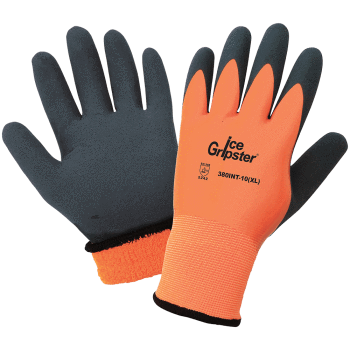Have you ever wondered how work gloves achieve waterproof status? We’ve rounded up some key information on the developing technology when it comes to waterproofing work gloves. There are four common types of waterproofing that you’ll find on the market, which we’ll talk about as follows: treatment, single layer solution, double layer solution, and triple layer solution.
Treatment
This is the most basic form of waterproofing you’ll find. The treatment involves spraying the fabric of the glove with a PVC or silicone-based substance, which results in a glove that is more appropriately categorized as water repellant, rather than water proof.
While this is the most economical type of waterproofing, it is also the least effective and quickest to wear out. It is best to select this type of waterproofing if there is another primary feature you’re looking for in the glove, such as cut resistance.
Single-Layer Solution
This type of water proofing creates a barrier that doesn’t allow anything through. It doesn’t let any moisture through, however gloves with this sort of treatment can tend to be a bit bulky and lack needed dexterity.
In addition to not letting anything in, single-layer solution gloves also do not let anything out. These gloves trap your hands’ sweat inside the glove, which is not only uncomfortable, but can be downright dangerous in cold conditions.
Double-Layer Solution
A waterproof glove that has a double-layer solution has an outer layer that has been treated and an inner layer made of PVC or polyurethane, and these two layers are constructed together. The inner layer of the glove offers breathability and helps keep sweat away from your hands. This option is used widely for commercial applications because it offers a much less bulky experience compared to the single-layer solution.
Triple-Layer Solution
A triple-layer solution offers the most genuine waterproofing a glove can have. It is the most effective, because it offers breathability, dexterity, and true waterproof properties. Similar to the double-layer solution, there are three layers that are fused together. In this case, there is a middle layer, which provides the waterproofing properties, while the inner layer gives comfort and the outer layer features any other protective components like cut or abrasion resistance.
This middle layer is referred to as the membrane. In order to be classified as a membrane, the material must be breathable and have pores that are small enough to block water droplets, but big enough to allow water vapor to pass through. You’ll notice that triple-layer solution waterproof gloves are more expensive, and this is because you’re paying for the quality of the waterproof membrane. You want to pay for the quality, because otherwise you’ll be suffering with a glove that isn’t truly waterproof.
One easy way to determine the quality of the membrane in a pair of gloves is to listen for the crinkle. If you handle the glove and can hear crinkling, this is the sound of a membrane that is not properly adhered to the inner and outer layer of the triple-layer solution. This will make the glove quite uncomfortable and ineffective to use.




